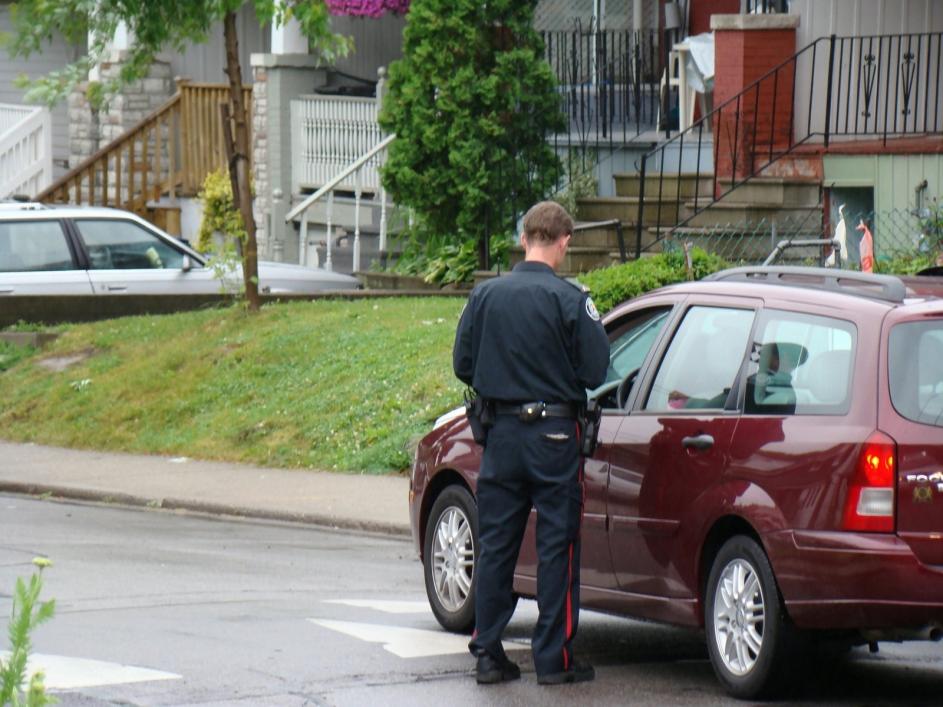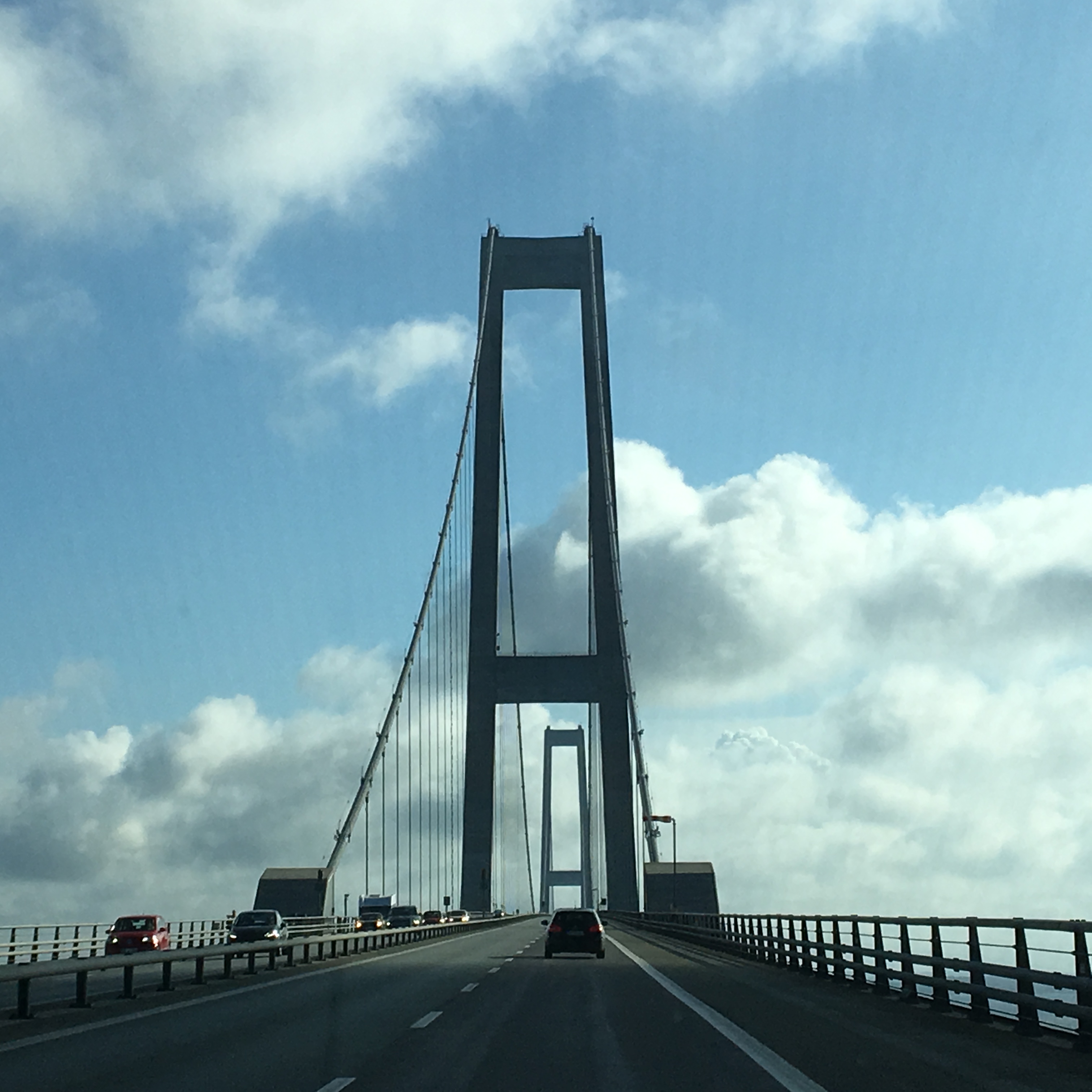Freedom Trade-offs - US & European Traffic & Gun Laws
 (Updated 5-10-2021)
(Updated 5-10-2021)
Our recent trip through three European countries allowed us to practice three of our languages – German, Dutch and Danish - and reflect on Freedom trade-offs, e.g. on US vs European Traffic and Gun laws.
It also made me aware again how different these European countries deal with the US credos of “life, liberty & the pursuit of happiness” on the one hand, and with safety, as it relates to gun control and highway speeds, on the other.
(And no, that is not us in the picture receiving a speeding ticket: we never saw any traffic police traveling over 1,000 miles through Germany, Netherlands and Denmark!)
Gamesforlanguage's blog themes include language learning, travel, history and culture. My observations are personal and anecdotal, and I make no claim to having discovered any absolute truths.
Our AirBerlin flight from Boston took us directly to Dusseldorf, Germany. There, we rented a car and drove north, crossing into the Dutch province of Drenthe to attend a weekend family reunion there.
(Readers of previous posts may remember that we often attend family reunions in the Netherlands. Last year, after the reunion, we chartered a canal boat with friends. See: European Travels 3 – Dutch Language and Canal Boating . This year we continued to Denmark. See: European Travels 6 – From Lüneburg to Denmark.)
Road Travel - Speed Limits & Statistics
Germany
On the German Autobahn, it always takes me a few minutes to get used to the speed of the traffic. But then I go with the flow. Once we had cleared the congested metropolitan area around Dusseldorf and no longer faced any speed restrictions, 160 km/h (100 mph) became a comfortable cruising speed.
I actually find that driving fast on good roads in Germany is less tiring than driving with cruise control at 65 or 70 mph in the US.
In Germany, I constantly scan my rear view mirror for faster cars and estimate the distance to other, slower cars when in the passing lane. The freedom of driving fast is one of the joys of German Autobahn driving.
You may remember that Volkswagen used the German term “Fahrvergnügen” (Pleasure of driving) as a US marketing slogan a few years ago.
While there are many stretches on the German Autobahn that have no speed limits (about 70% of the German Autobahn grid), there are also specific speed limits in metropolitan areas or on country roads.
The Netherlands and Denmark
 Both countries use the same maximum speed limit of 130 km/h (82 mph) on motorways and 50 km/h (31 mph) in built up areas.
Both countries use the same maximum speed limit of 130 km/h (82 mph) on motorways and 50 km/h (31 mph) in built up areas.
On the busy Dutch motorways many drivers appeared to exceed the 130 km/h, while on the less traveled Danish highways few cars went faster than the speed limit.
As we discovered later in Copenhagen, Danish people generally seem to obey traffic laws: pedestrians don't jaywalk, bikes stop at red lights, cars follow speed limits. (On the new and amazing suspension bridge from Fyn to Sealand in Denmark, everybody kept to the posted speed limit.)
One method used in Denmark made a lot of sense to us. At the entrance of towns, a flashing sign showed us our speed. This was very effective because it prompted us to immediately slow down.
In all three countries there are warning signs about radar surveillance and indeed you can get “blitzed” by a radar operated camera, if you go too fast. You will receive your ticket later in the mail.
But what was remarkable: On over 1000 miles of car travel in Germany, the Netherlands and Denmark over a three-week period, we did not see ONE police car, not even one waiting behind bushes or trees as so often happen in the US.
Speed vs. Safety
There seems to be no question that higher speeds can lead to more serious accidents. However, the road fatality rates of the US and the three countries though which we traveled, do not seem to confirm the simple correlation.
Comparing accident and death rates between countries is not easy, given the mix of rural vs. interstate highways, different ways of compiling statistics, etc.
Deutsche Welle reported for 2016: Road deaths in Germany fall to all time low but accidents on the rise.
Also, the World Health organization's figures for 2013 are interesting for the three countries compared to the US (see below.)
|
Country |
Road fatalities per 100,000 inhabitants per year |
Road fatalities per 100,000 motor vehicles |
Road fatalities per 1 billion vehicle km |
|
United States |
10.6 |
12.9 |
7.1 |
|
The Netherlands |
3.4 |
6 |
4.5 |
|
Denmark |
3.5 |
6.7 |
4 |
|
Germany |
4.3 |
6.8 |
4.9 |
What is notable, is how close the three European countries are in their road fatality statistics compared to the United States, which are substantially higher in all three categories above.
Update: The Road fatalities per 100,000 inhabitants had increased by 2019 for three countries, except for Germany, where they fell:
United States: 12.67
Netherlands: 3.98
Denmark: 3.7
Germany: 3.78
A Business Insider Report from 2016 lists 8 reasons that German's Autobahn is so much better than US highways.
Interstate speed limits in the US were generally lowered to 55mph in the early seventies during the oil embargo. Since then, posted freeway speeds have again been raised in some states, to 65, 70, 80, and in Texas, with the highest posted speed in the US, even to 85 mph.
The lowered speed limits reduced road fatalities, but other factors apparently must be important as well, as the differences to the three countries above demonstrate.
While the three European countries – especially Germany - have higher traffic speeds than the US, the statistics indicate that driving in the US is quite a bit more dangerous.
Guns - Laws and Statistics
Germany has some of the strictest gun laws in Europe, as this Local.de article explains. Without analyzing the details of the differences to these countries, the Netherlands and Denmark are not far behind.
Over the last 10 years, the rate of gun deaths per 100,000 people have further declined in these three European countries. You can find the facts and statistics for each country on Gunpolicy.org.
The relevant statistics on guns can be compared to the road fatalities above and also present a sobering picture for the US:
|
Country |
Rate of All Gun Deaths per 100,000 people in 2004 |
Rate of All Gun Deaths per 100,000 people in 2014 |
|
United States |
10.10 |
10.54 |
|
The Netherlands |
0.70 |
0.48 |
|
Denmark (2002/2012) |
1.79 |
0.90 |
|
Germany |
1.39 |
1.01 |
Per 100,000 people, there are essentially as many gun deaths as road fatalities in the US.
Update: By 2018 the rate of gun deaths (per 100,000 inhabitants) had changed in the four countries as follows:
United States: 12.15 (+15.2% over 2014)
Netherlands: .44 ( - 8.3%)
Denmark: 1.11 (+23.3%)
Germany: 1.01 (unchanged)
Happiness
It is quite impossible to grasp the mood of a country during a short visit.
In the Netherlands, we were able to discuss with our extended family, which includes Dutch, German Austrian, Canadian, and US citizens, many of their countries' problems and issues.
Not surprisingly, Donald Trump's presidency was a frequent topic, as were Europe's immigration challenges, Brexit, educational policies, etc.
As we were leaving Europe, the formation of a Dutch government coalition was still underway; Germany was going to go to the polls shortly, and, we read about increased security measures for a Jewish synagogue in Copenhagen. While Norway tops the global happiness rankings for 2017, Denmark is quite close as #2, and the Netherlands  not far behind as #6. On the other hand, Germany with #16, is listed behind the United States (#14).
not far behind as #6. On the other hand, Germany with #16, is listed behind the United States (#14).
The report notes that “all of the top four countries [Norway, Denmark, Iceland, and Switzerland] rank highly on all the main factors to support happiness: caring, freedom, generosity, honesty, health, income and good governance.”
One may argue with the criteria used for the “Happiness Rankings”, but Denmark impressed us as a country that really seemed to work well.
Update: Not surprisingly, the World Happiness Report of 2021 focused on the effects of Covid-19.
With slight changes of the 2020 scoring methodology (compared to 2017-2019) Denmark still ranks in the first 5 "happiest" countries:
1. Finland
2. Iceland
3. Denmark
4. Switzerland
5. Netherlands
Many in the US obviously believe that the 2nd Amendment - “A well regulated Militia, being necessary to the security of a free State, the right of the people to keep and bear Arms, shall not be infringed.” - is an essential ingredient for freedom and happiness.
European countries do not have such paragraphs in their constitutions, so gun ownership is not discussed much.
On the other hand, the speed limits in many US states, which especially Germans would argue against, are accepted as necessary for improving traffic safety – which, nevertheless, is substantially below the figures for the three countries where we traveled.
I do not know – but have not found any reference in the Report – whether the “happiness rankings” mentioned above, consider gun control or speed limits. What seems clear, however, is that both involve trade-offs.
The gun death statistics comparison between the US and the three European countries seems to point to one logical conclusion: More gun ownership/less gun control – higher gun death rates.
On the other hand, speed limits alone don't seem to lower traffic fatalities substantially, as the rates for the US and the same three countries show. It also suggests, however, that statistics alone can't always explain cause and effect relationships.
I had started this post after returning from our trip to Denmark, just before the October 1, 2017 Harvest Festival shooting in Las Vegas and then put it aside.
Reading this New York Times article after the shootings in Texas - What Explains U.S Mass Shootings? International Comparisons Suggest an Answer - I was struck by the article's last paragraph:
The Difference Is Culture
The United States is one of only three countries, along with Mexico and Guatemala, that begin with the opposite assumption: that people have an inherent right to own guns.
The main reason American regulation of gun ownership is so weak may be the fact that the trade-offs are simply given a different weight in the United States than they are anywhere else.
After Britain had a mass shooting in 1987, the country instituted strict gun control laws. So did Australia after a 1996 shooting. But the United States has repeatedly faced the same calculus and determined that relatively unregulated gun ownership is worth the cost to society.
That choice, more than any statistic or regulation, is what most sets the United States apart.
“In retrospect Sandy Hook marked the end of the US gun control debate,” Dan Hodges, a British journalist, wrote in a post on Twitter two years ago, referring to the 2012 attack that killed 20 young students at an elementary school in Connecticut. “Once America decided killing children was bearable, it was over.”
Countries develop different trade-offs and their relative weights for many aspects of life. They not only affect gun laws and speed limits, control of alcohol and recreational drug sales, but also citizen's registrations and identity cards, availability of public transportation, access to/funding of higher education, healthcare, and many others.
A country's culture is not static, but is constantly evolving. And so are freedom and safety trade-offs.
Bio: Peter Rettig is the co-founder of Gamesforlanguage.com. He is a lifelong language learner, growing up in Austria, Germany, and Switzerland. You can follow him on Facebook, Twitter and Instagram, and leave any comments with contact or below.
